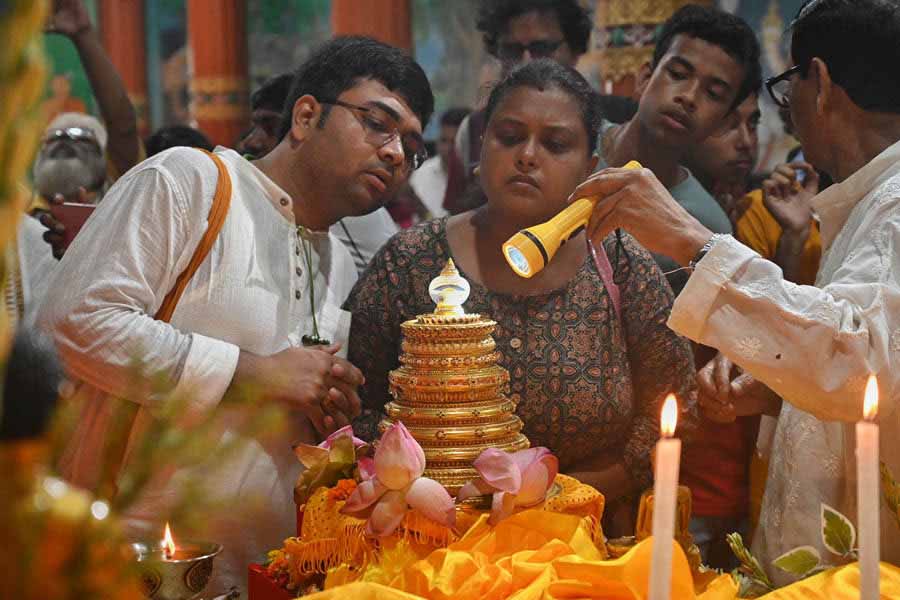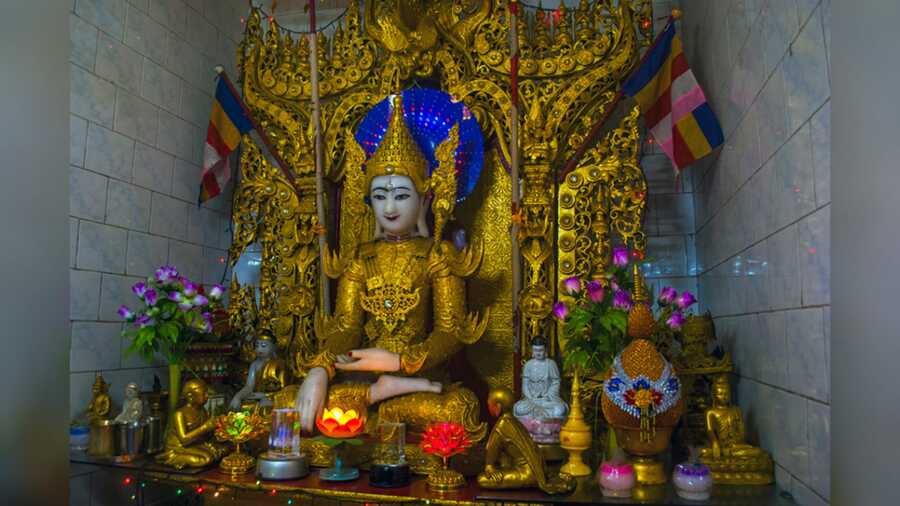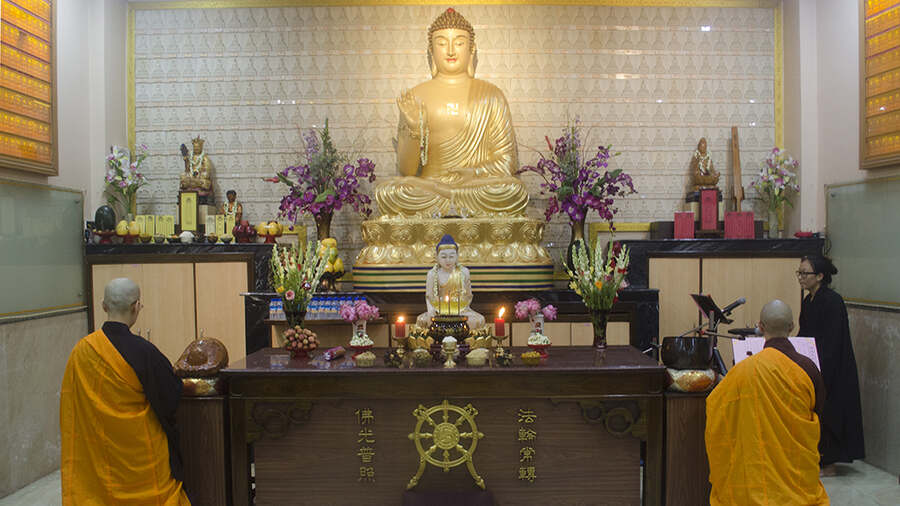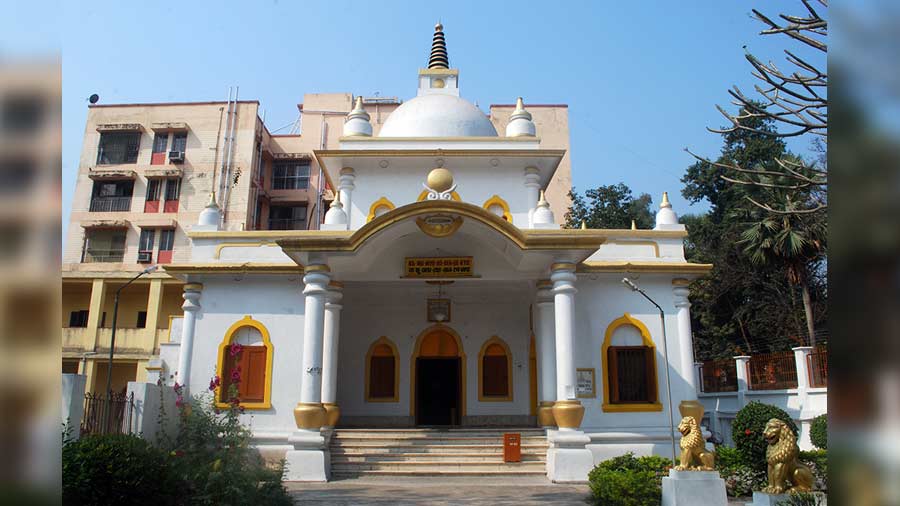Buddha Jayanti, the birth anniversary of Gautam Buddha, is celebrated across Kolkata complete with prayer sessions, processions and lion dances. The bigger and popular Buddhist temples of the city, such as the Mahabodhi Temple near College Square and the Nipponzan Myohoji (Japanese) Buddhist Temple in Dhakuria, saw a large footfall of Buddhist and non-Buddhist devotees. But the small Myanmar Buddhist Temple in Bowbazar celebrates Buddha’s birthday with bowls full of khow suey. The celebrations are attended by a small group of mostly local devotees and Kolkatans with Burmese connect. Many of these devotees are not necessarily Buddhist.
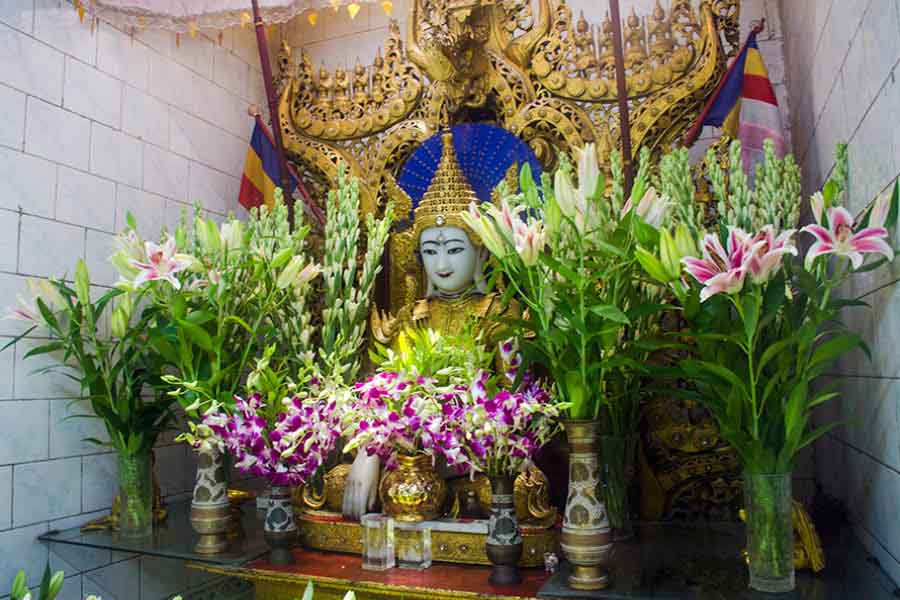
The main Buddha idol at the Myanmar Buddhist Temple in Bowbazar.
The almost century-old Myanmar Buddhist Temple stands next to the equestrian statue of Rana Pratap in front of the gate number 5 of Central Metro station. The two bi-lingual (Burmese and English) signage mark the presence of the temple, which is mostly overlooked by thousands of people walking past it every day. The gates are usually closed and are only opened on request. But on Buddha Jayanti, the story is different and everybody is welcomed into the small shrine located on the top floor of the building.
The building once served as the guest house for Myanmar (erstwhile Burma) students who came to study in Kolkata. Siddhartha Sankar Sen was once such students, who arrived in Kolkata in 1983 to study at Asutosh College. Although he never stayed at the guesthouse, he frequented the temple, as it was a place connected to his Burmese roots. Later, in 1988, he was joined by his elder brother, Amar Nath Sen (popularly known as Bhanu da), and today, the Sen brothers play an active role in managing the temple. The junior Sen narrates: “During my student days, I stayed in Park Circus but was well connected with the temple. Later, I married a lady, who stayed a stone’s throw away from the temple and my bond grew stronger.”
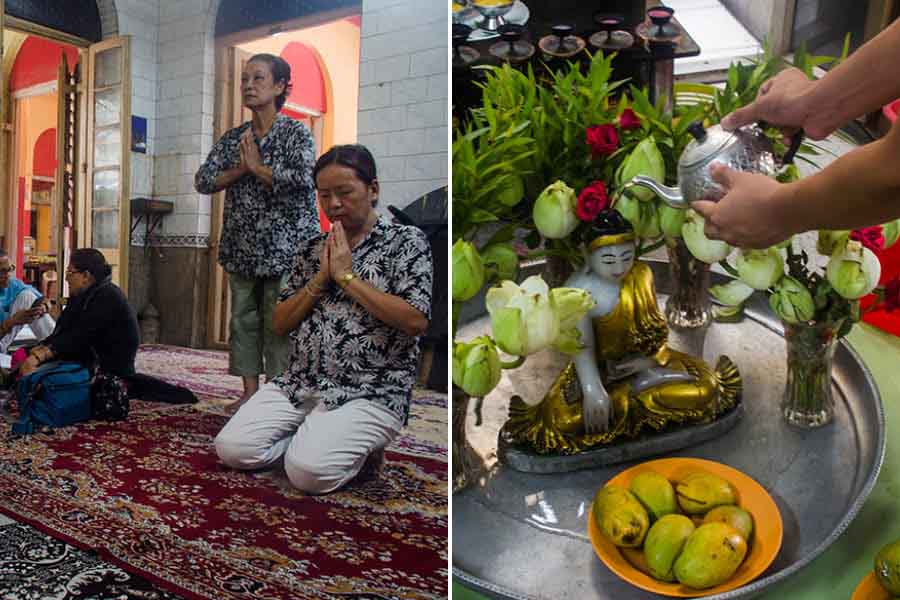
Devotees offer prayers on Thursday and (right) one of the them pours water on the Buddha statue.
He further adds: “But my real involvement with the temple affairs started only during the Covid times. Our priest, the supreme abbot U. Desaka, fell seriously ill and I got took up the task of running of the temple.”
Bhanu da says: “Students no longer come from Myanmar but the guesthouse is used for Buddhist pilgrims using Kolkata as a transit point. Also, Kolkata houses a handful of people with Burmese link but their numbers are dwindling by the day. These people always make it a point to visit the temple during Buddha Jayanti.”
On Buddha Jayanti, the celebrations start early in the morning with a puja performed by the supreme abbot. A statue of Buddha is placed on a temporary platform in front of the main shrine housing a milk white statue of Buddha complete with gold-coloured ornamentation. The devotees start coming from around 11am. The devotees offer prasad, consisting mainly of whole fruits, which are placed round the temporary platform housing the Buddha statue. After placing the prasad, water is poured on the statue using a kettle.
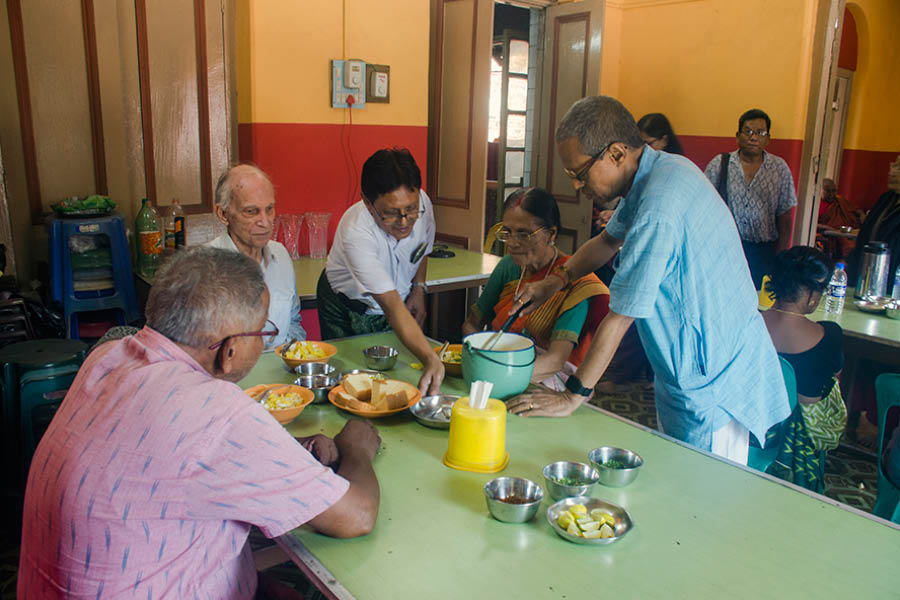
‘Prasad’ being served to the devotees.
The devotees comprise local residents with an interesting ethnic mix comprising Nepalese, Chinese, Lepcha, Tibetan and Bengali people. Not all are practising Buddhists but they come with their bags full of fruits and place them around the Buddha statue and pour water on the statue. Apart from the Sen brothers only few had a Burma connect and among them was Derric John Munro. Munro’s great-grandfather was a British officer posted in Burma, while his grandmother had a link with the Burmese royal family.

Devotees arrange ‘prasad’ under the guidance of the chief abbot.
He fled Burma during the World War II with his parents. He was only four years old at the time. He was educated at St Xavier’s College in Kolkata and later worked as a teacher in St Paul’s School, Kolkata. He also mastered the art of Kuchipudi dance and was a professor of dance at Rabindra Bharati University. He is married to a Bengali woman and speaks fluent Bengali.
The greatest part of the festivities of the Myanmar Buddhist Temple is the food. Guests are provided with large bowls full of the Myanmar traditional dish of khowsuey. The meal starts with slice cakes and tea, followed by a large bowl full of khowsuey. There are options of vegetarian and non-vegetarian. The non-vegetarian version comes in with chicken and sliced boiled eggs. The chicken comes in with skin and has its share of fat.

Two local residents enjoy their meal of (from left) slice cake, non-vegetarian khowsuey and China grass pudding.
The vegetarian version is not only devoid of egg and chicken but also garlic and onion. Bhanu da adds: “Many families have vegetarian on Buddha Purnima day so the veg option is for them. This year, our devotee count stood at about 60.” Both the version has thick soup flavoured with coconut milk. The meal ends with a sweet note with China grass pudding. It is made out of a natural plant-based gelatin from China grass plant which is flavoured with sugar and coconut milk. No wonder, it is a grand way to celebrate the Buddha Jayanti in our very own city.

